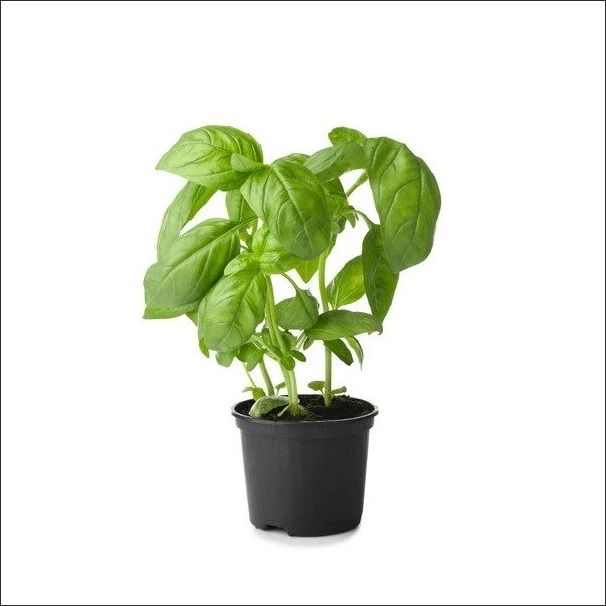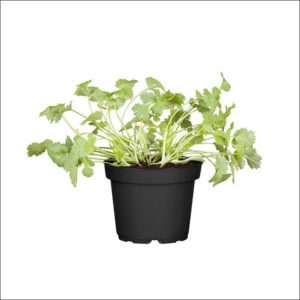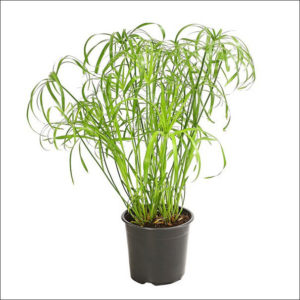Description
Green basil
Basil is a highly fragrant plant whose leaves are used as a seasoning herb for many different types of foods. Basil has become one of the most recognizable herbs ever since pesto, the mixture of basil, pine nuts and Parmesan cheese, has become popular.
Basil has round leaves that are oftentimes pointed. They are green in color, although some varieties feature hints of red or purple. Basil looks a little like peppermint, which is not surprising since they belong to the same plant family.
Anyone who is serious in cooking will probably have red basil in the herb garden. It can be used not only for culinary applications, but also for other purposes.
Pesto: Among others, red basil is a popular ingredient in pesto sauces. However, you should observe caution when using this herb. If you use too much, you will end up with flavor that is too strong for most people to tolerate. If you use too little, on the other hand, your pesto will have an undesirable bitter aftertaste.
Salad: As it has been earlier mentioned, the color of red basil makes it distinct compared to other varieties. With this, it will be an excellent choice for a salad garnish. Make sure to place it on the top so that its appearance will be appreciated. It will make a plate of salad more colorful and appetizing.
Cocktails: If you love experimenting with liquors, red basil will give a unique twist to the usual cocktails. For instance, red basil leaves can be shaken with vodka, peppercorns, lemon juice, and sugar syrup. This drink is known as the Red Basil Smash. Gin can also be substituted if you prefer it over vodka.
Iced Tea: If you do not want alcoholic drinks, red basil will also be an excellent addition for a refreshing summer drink. You can combine it with lemon and ginger for optimal flavor. Be sure to use sparingly so that the flavor will not be overpowering.
Soups: Especially when the weather is cold, sipping a bowl of hot soup will be a good idea. You can use red basil in a spinach minestrone soup. Like in its other culinary uses, make sure to add only the right amount of red basil.
Planting and care:
Light requirements: Full sun is ideal, but plants can grow in part shade.
Planting: Space 8 to 18 inches apart, depending on type. (Read the stick tag that comes with the plant for specific spacing recommendations.)
Soil requirements: Plants grow best in rich, moist but well-drained soil with a pH of 6.0 to 7.0. Work organic matter into soil before planting to add fertility and improve moisture retention. In containers, use premium quality potting soil.
Water requirements: Keep soil consistently moist through the growing season. Add a mulch layer to slow water evaporation from soil. In containers, water whenever the top inch of soil is dry.
Frost-fighting plan: Basil is very frost-tender and damaged by temperatures below 40º F. Use a frost blanket to protect newly planted seedlings from late spring frosts or prolong the fall growing season.
Common issues: Pinch flower buds to keep plants from bolting. Once flowers form, leaf flavor changes. Pests to watch out for: aphids, slugs, Japanese beetles, and earwigs. Fungal diseases sometimes occur in humid climates, and root rot is common in poorly drained soil.
Growing tips: Pinch or prune basil plants as they grow to promote branching and bushiness. Never cut into the woody parts of a stem; plants won’t re-sprout.
Harvesting: Pick leaves at any point in the growing season. Choose individual leaves, or snip leafy stems to the length you desire.
Storage: Cut basil stems and place in water like a fresh bouquet. They’ll last for weeks, provided you remove any leaves below the water line and change water regularly. Never place basil in the refrigerator; the cold air damages leaves. Preserve basil by freezing or in herbal vinegar.






Reviews
There are no reviews yet.